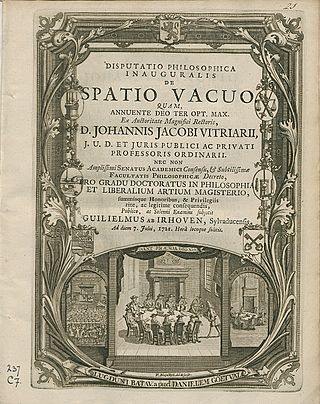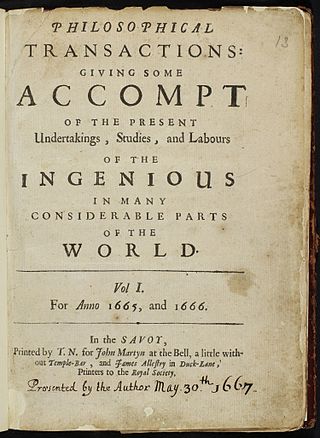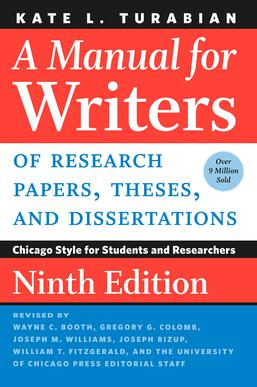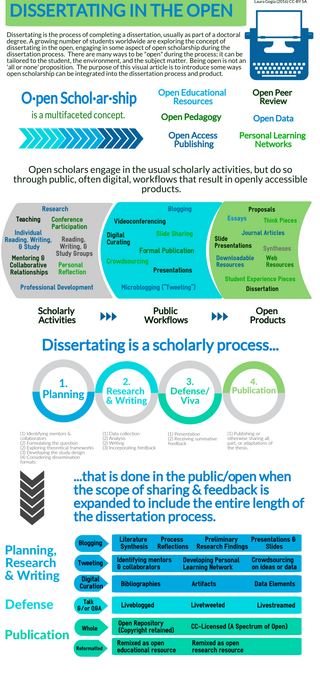Related Research Articles

An essay is, generally, a piece of writing that gives the author's own argument, but the definition is vague, overlapping with those of a letter, a paper, an article, a pamphlet, and a short story. Essays have been sub-classified as formal and informal: formal essays are characterized by "serious purpose, dignity, logical organization, length," whereas the informal essay is characterized by "the personal element, humor, graceful style, rambling structure, unconventionality or novelty of theme," etc.

In academic publishing, a scientific journal is a periodical publication intended to further the progress of science, usually by sharing findings from research with readers. They are normally specialized based on discipline, with authors picking which one they send their manuscripts to.

A thesis, or dissertation, is a document submitted in support of candidature for an academic degree or professional qualification presenting the author's research and findings. In some contexts, the word thesis or a cognate is used for part of a bachelor's or master's course, while dissertation is normally applied to a doctorate. This is the typical arrangement in American English. In other contexts, such as within most institutions of the United Kingdom and Republic of Ireland, the reverse is true. The term graduate thesis is sometimes used to refer to both master's theses and doctoral dissertations.

Scientific literature comprises academic papers that report original empirical and theoretical work in the natural and social sciences. Within a field of research, relevant papers are often referred to as "the literature". Academic publishing is the process of contributing the results of one's research into the literature, which often requires a peer-review process.
An outline, also called a hierarchical outline, is a list arranged to show hierarchical relationships and is a type of tree structure. An outline is used to present the main points or topics (terms) of a given subject. Each item in an outline may be divided into additional sub-items. If an organizational level in an outline is to be sub-divided, it shall have at least two subcategories, although one subcategory is acceptable on the third and fourth levels, as advised by major style manuals in current use. An outline may be used as a drafting tool of a document, or as a summary of the content of a document or of the knowledge in an entire field. It is not to be confused with the general context of the term "outline", which a summary or overview of a subject, presented verbally or written in prose. The outlines described in this article are lists, and come in several varieties.

Academic writing or scholarly writing is nonfiction writing produced as part of academic work in accordance with the standards and disciplines of each academic subject, including:
Kate Ledgerwood Turabian was an Armenian-American educator who is best known for her book A Manual for Writers of Research Papers, Theses, and Dissertations. In 2018, the University of Chicago Press published the 9th edition of the book. The University of Chicago Press estimates that the various editions of this book have sold more than 9 million copies since its publication in 1937. A 2016 analysis of over one million college course syllabi found that Turabian was the most commonly assigned female author due to this book.
A thesis statement usually appears in the introductory paragraph of a paper. It offers a concise summary of the main point or claim of the essay, research paper, etc. It is usually expressed in one sentence, and the statement may be reiterated elsewhere. It contains the topic and the controlling idea.

A Manual for Writers of Research Papers, Theses, and Dissertations is a style guide for writing and formatting research papers, theses, and dissertations and is published by the University of Chicago Press.
Börje Langefors was a Swedish engineer and computer scientist, Emeritus Professor of Business Information Systems at the Department of Computer and Systems Science, Stockholm University and Royal Institute of Technology, Stockholm, and "one of those who made systems development a science."
Universal Publishers is the parent publishing company of three non-fiction book imprints specializing in nonfiction, how-to, technical and academic titles. It originally began in 1997 as "Dissertation.com," one of the first companies to use print on-demand and PDF e-book technologies to publish academic theses and Ph.D. dissertations for sale online. The company was founded by Jeffrey R. Young, while he was in graduate school as a way to make academic dissertations widely available to other students and researchers at a reasonable price.

A Doctor of Law is a doctorate in legal studies.

SCIA, the Scandinavian Conference on Image Analysis, is a biennial scientific conference organized by the national pattern recognition societies in the Nordic countries. The conference is officially sponsored by the International Association of Pattern Recognition which is the international umbrella organization for the national pattern recognition societies. The conference series was established by pattern recognition, image analysis and computer vision pioneers in the universities of the Nordic countries, but has become an international conference acknowledged by the researches in the fields of computer vision, image analysis, pattern recognition and multimedia.

The Börje Langefors Award is an annual academic prize awarded since 2011 by the Swedish Information Systems Academy for the best doctoral dissertation in Sweden in the subject areas - informatics, information systems, data and information science or equivalent. The prize aims to reward and encourage development of high standard research in Sweden, and to demonstrate exemplary research in informatics.

Ferdinando Sardella, born 1960, is a Swedish scholar of the history of religions, Hinduism, and religious studies, the former director and coordinator of the Forum for South Asia Studies at Uppsala University.

Dissernet is a volunteer community network working to clean Russian science of plagiarism. The core activity of the community is conducting examinations of doctoral and habilitation theses defended in Russian scientific and educational institutions since the end of the 1990s, and making the results of such examinations known to as many people as possible. The community is composed of professional scientists working in various fields of science both in Russia and abroad, and also journalists, civil activists and volunteers.
A Doctor of Philosophy by publication is a manner of awarding a Ph.D. degree offered by some universities in which a series of articles usually with a common theme are published in scholarly, peer-reviewed journals to meet the requirements for the degree, in lieu of presentation of a final dissertation. Many PhD by Publication programs require the submission of a formal thesis and a viva voce.
Diva stands for Digitala Vetenskapliga Arkivet and is a digital repository that enables Swedish universities, university colleges, public authorities, research institutes and museums to collect and make publications openly available.
Jan Eric Ingvar Kärnefelt is a Swedish lichenologist.

An open thesis, also known as an open dissertation, is a thesis that is freely available for members of the public to access upon publication, and often also during the planning and writing process. The decision to write an open thesis is made by the author, who will usually explain their rationale for creating an open thesis as part of the final published work or while developing it. Writing an open thesis is a process with many decision points regarding where and when to share information openly - from the planning stage, through research and writing, the defense/ voce viva and ultimate publication. Open theses are usually created and located in digital and multimodal formats.
References
- 1 2 Writing thesis as a collection of papers, University of reading, UK. Retrieved 28 May 2018.
- ↑ "Thesis as a series of papers", The University of Western Australia, Retrieved 29 May 2018
- 1 2 3 Article theses and essay theses Archived 30 September 2011 at the Wayback Machine , Turku School of Economics, Finland, October 2010.
- 1 2 About monographs and compilation theses Archived 14 September 2013 at the Wayback Machine , University of Gothenburg, Sweden
- ↑ Niclas Hagen,The compilation thesis as a genre and as a method, 7 May 2011 blog, affiliated with Lund University, Sweden.
- ↑ Guidance on the structure of a compilation thesis Archived 27 September 2011 at the Wayback Machine , Lund university, Faculty of engineering, Sweden. Last updated: 27 April 2011.
- ↑ "On the choice of thesis format and on writing the "kappa" of a thesis of publication" (PDF). Archived from the original (PDF) on 30 March 2012. Retrieved 11 August 2011.